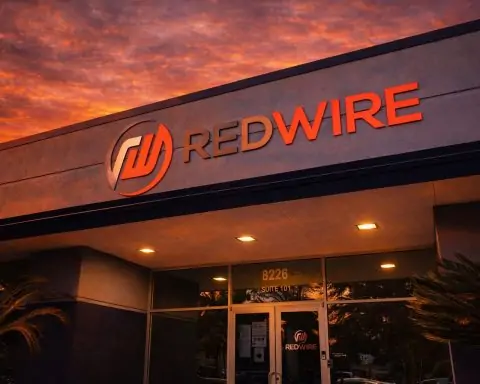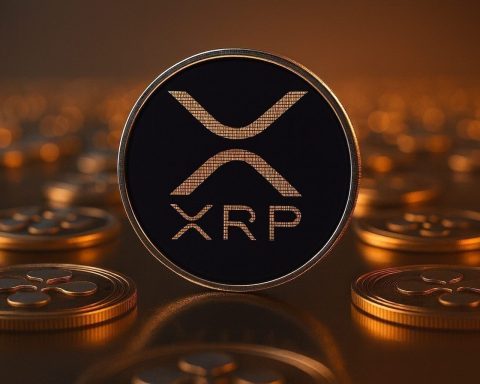- By mid-2025, 73% of marketing teams were using generative AI in some capacity.
- 62% of enterprise marketing teams now have formal generative AI guidelines.
- 75% of consumers are more likely to purchase from brands delivering personalized content.
- In Asia-Pacific, 2025 sees AI fully integrated into personalized marketing with hyper-targeted content, dynamic pricing, and automated journeys.
- By late 2024, about 60% of Google searches ended without a click.
- 35% of marketers cited optimizing for SEO as a top challenge.
- In 2024, there were over 8.4 billion voice assistants in use globally, and 32% of consumers use voice search daily.
- 21% of marketers say short-form video delivers the highest ROI.
- 40% of Gen Z have discovered new products on social media in the past three months.
- The EU Digital Operational Resilience Act took effect for financial services in early 2025.
Introduction: A Dynamic Landscape in 2024–2025
Content marketing in 2025 is evolving faster than ever, fueled by technological leaps and changing consumer behavior. Far from slowing down, investment in content marketing continues to grow – nearly half of enterprise marketers surveyed plan to increase content budgets for 2025 [1]. Why? Because content remains critical at every stage of the buyer’s journey: 47% of buyers now consume 3–5 pieces of content before ever talking to a sales rep [2]. Consumers expect valuable content from brands, and companies are responding with more resources, new formats, and innovative strategies. Yet this rapid growth comes with challenges. Many marketers admit their strategies feel “meh,” citing familiar pain points like lack of resources and unclear goals [3] [4]. At the same time, paradigm-shifting forces – generative AI, data privacy laws, shifting social platforms, voice search, and video domination – are shaking up how we plan and execute content marketing.
How can marketers keep up? By staying ahead of the key trends shaping content marketing’s present and future. Below we explore 10 major trends – from AI-assisted content creation and hyper-personalization to the evolution of SEO, voice and video content booms, social media upheavals, and new regulations. Along the way, we’ll share expert insights, industry stats, and real-world examples to illustrate what’s happening and what’s coming next. Read on for a comprehensive look at the current state of content marketing and what savvy marketers should prepare for in the years ahead.
1. Generative AI Goes Mainstream in Content Creation
Perhaps the most disruptive force in content marketing today is the rise of generative AI. In 2024, AI tools like GPT-4 became widespread for writing, ideation, image generation, and more – and adoption has only accelerated. By mid-2025, 73% of marketing teams were using generative AI in some capacity [5]. This aligns with HubSpot’s findings that 88% of marketers planned to maintain or increase AI investments in 2024, and 43% are already using AI to write copy, create images, or inspire ideas [6]. The appeal is clear: AI can help produce the volume of content needed to engage audiences across channels, and do it faster and cheaper. For instance, one marketer noted that using AI she was able to generate a complete TikTok video “surprisingly quick and easy,” calling it “worth a shot” for speeding up content production [7].
But will AI content flood the internet with mediocre posts, or worse, replace human marketers? Experts overwhelmingly say AI is a tool, not a replacement for human creativity. “With the current technology, there is no actual intelligence in the AI, and it’s not coming for your job. However, there is a key need to adapt because AI can be used to do your job better,” advises Eric Enge, a digital marketing veteran [8]. In other words, smart marketers are using AI to augment their work – automating tedious tasks, generating drafts or variations, and analyzing data – while doubling down on the human elements like strategy, storytelling, and brand voice. “We know AI can write, but it can never be a storyteller. It can help, but it won’t be taking our marketing jobs,” as content strategist Ali Orlando Wert put it [9].
To harness AI effectively, organizations are establishing guardrails. In 2024, companies big and small raced to publish AI usage guidelines for their content teams. For example, 62% of enterprise marketing teams now have formal generative AI guidelines (up from 36% a year prior) outlining acceptable use cases, security and data precautions, and quality standards [10] [11]. Many require human review or editing of AI-generated text to ensure factual accuracy and brand alignment – a recognition that AI can produce content quickly but not perfectly. When used wisely, though, AI is proving to be a game-changer. Marketers report that AI tools have reduced tedious writing tasks (50% observing this benefit), improved content optimization (43%), and made workflows more efficient [12] [13]. No one expects AI to stop content teams from growing; in fact only 0% of enterprise marketers surveyed anticipated job cuts due to AI, while 24% expected to hire more content staff in 2025 [14] [15]. The consensus: AI is here to stay as a content collaborator, and those who master it can produce more content at scale without sacrificing quality.
For content marketers, the immediate future will involve a hybrid approach – leveraging AI’s efficiency without losing the human touch. Marketing leaders like Stephanie Stahl of CMI challenge teams to “double down in 2025 and work harder at creating something great. Maybe that means less content… maybe that means real thought leadership” [16]. In practice, that might mean using AI to generate routine content (product descriptions, basic blog drafts, social captions), freeing up human creators to focus on big-picture strategy, creativity, and truly exceptional content that stands out. The marketers who thrive will be those who bring their greatest work – combining AI’s capabilities with human insight – to meet the ever-rising bar for content in 2025.
2. Hyper-Personalization vs. Privacy: Data-Driven Content in a New Era
Today’s consumers demand content tailored to their interests and needs – yet they also expect brands to respect their privacy. This tension between personalization and privacy is one of the defining challenges of modern marketing. On one hand, personalization clearly pays off: 75% of consumers are more likely to purchase from brands that deliver personalized content and experiences [17]. In previous research, 71% of consumers even said they expect companies to deliver tailored interactions, and 76% report frustration when content isn’t personalized [18]. It’s no wonder that brands excelling in personalization are “soaring past their revenue goals” as customers reward those who make them feel understood [19] [20]. Marketers recognize this — personalized content at scale has become a Holy Grail. In fact, in the Asia-Pacific region, 2025 is seeing AI fully integrated into personalized marketing: companies are using hyper-targeted content, dynamic pricing, and automated customer journeys powered by AI to make every interaction feel individually relevant [21]. Generative AI is enabling content localization and one-to-one messaging in ways that simply weren’t feasible before.
On the other hand, data privacy regulations and consumer concerns are making it harder to obtain and use personal data. The last few years brought a wave of privacy laws worldwide – GDPR in Europe, CCPA and new state laws in the U.S., and similar regulations from Brazil to India – all giving consumers more control over their data [22] [23]. Browser changes (like Apple’s iOS tracking limits and Google’s planned phase-out of third-party cookies by 2024/2025) further restrict the data flows marketers once took for granted [24] [25]. According to HubSpot, increased data regulations were the top data challenge cited by marketers for 2024, and about 20% noted that consumers have become less trusting about sharing personal data [26] [27]. In Asia Pacific, countries including India, Japan, and South Korea enacted strict data privacy laws by 2025, with consumer awareness of data rights at an all-time high [28]. The era of easy behavioral tracking is ending, and marketers are being forced to adapt quickly.
The solution is a shift to privacy-first, first-party data strategies. Smart brands are focusing on collecting data directly from their audiences – with consent – and leveraging “zero-party data” (information customers willingly hand over, like preferences or quiz responses) to drive personalization [29]. Transparency and trust are critical: companies that clearly communicate how they use data and deliver real value in exchange will win loyalty. “Embrace privacy-friendly data strategies to cultivate trust,” advises Deloitte, noting that turning direct customer insights into value will be a competitive advantage going forward [30] [31]. In practice, this means everything from revamping preference centers and email subscription options, to creating interactive content that invites users to share input (and then using it to personalize follow-ups).
At the same time, marketers are using AI and analytics to do more with less data. AI can analyze smaller first-party datasets to detect patterns and predict user needs, enabling a kind of micro-personalization without needing the oceans of third-party data that were once the norm [32] [33]. For example, retailers are using AI to target promotions to very specific segments (by lifecycle stage, product affinity, etc.) instead of blasting one-size-fits-all offers [34] [35]. Generative AI can even help create multiple content variants tuned to different audience personas or locales, scaling personalized content creation in a way humans alone could not [36] [37]. The takeaway: personalization isn’t dead – it’s getting smarter and more strategic. Marketers just have to navigate the new rules. Brands that find the sweet spot – delivering relevant, personalized content and respecting user privacy – will “turn the privacy challenge into an opportunity” and build deeper customer loyalty in the process [38].
One encouraging sign: despite the hurdles, data remains the lifeblood of effective content marketing. 30% of marketers say data insights help identify their most effective strategies, which is why investment in analytics is rising [39]. The future likely holds a cleaner, more deliberate data ecosystem – one built on customer consent and mutual value. In the long run, this could multiply trust and make personalized content even more impactful. As McKinsey put it, companies are “entering a promising new era of personalization” where AI and creativity combine to meet the ever-higher bar of customer expectations [40] [41].
3. SEO in the Age of AI: Search Evolves, but Quality Content Reigns
Is SEO dead in the era of AI-driven search? Far from it – but it’s certainly evolving. In 2023, Google introduced its Search Generative Experience (SGE) and started weaving generative AI answers into search results, while Bing integrated GPT-4 into its search interface [42]. These moves sparked predictions that AI would kill traditional SEO, as users get instant answers without clicking links. Indeed, the trend of “zero-click searches” is accelerating: by late 2024, roughly 60% of Google searches ended without a click to any website [43], because Google either answered the query directly via an AI overview or featured snippet. Marketers are understandably concerned – if people no longer need to visit our pages for information, how do we attract traffic and leads?
The good news is that SEO isn’t dying; it’s adapting. “AI isn’t replacing SEO. It’s expanding SEO into new territories with bigger opportunities,” writes SEO expert Adam Heitzman [44]. In the new model, the goal is not just to rank #1 for a keyword, but to be the trusted source that AI-powered search agents draw on. When someone asks ChatGPT or Google’s AI a question, these systems scan countless webpages to synthesize an answer [45]. Crucially, AI search still cites its sources – Google’s AI snapshots link to websites, and even chatbots like Bing Chat and Perplexity provide citations [46]. That means content creators can still earn visibility and traffic, if their content is the one being referenced by the AI. In fact, being a featured source in an AI-generated answer can drive highly qualified traffic, because the user sees your content contributed to the answer and comes with built-in trust [47].
So how do you become the chosen source? The rules of E-E-A-T (Experience, Expertise, Authoritativeness, Trustworthiness) in content are more important than ever. “To stay visible, your content must be accurate, structured, and built for AI systems that retrieve answers, not just for traditional rankings,” Heitzman notes [48]. This means creating deep, well-structured content that thoroughly covers topics (so algorithms deem it a reliable reference), backed by data and expert insights. It means using clear headings, schema markup, and conversational language that aligns with natural questions. It also means keeping content fresh and up-to-date, since AI tends to favor current information [49]. We’re already seeing shifts: for example, only 35% of marketers in a recent survey cited “optimizing for SEO” as a top challenge, down from 45% previously [50]. This might be because forward-thinking teams are focusing less on old-school keyword hacks and more on content quality and authority. Notably, the share of marketers who struggle to create quality content dropped to 27% (from 44% a year before) [51] – possibly reflecting that they’ve prioritized quality or adopted better tools to assist in writing.
Another adaptation is updating how we measure SEO success. Traditional metrics like simple organic traffic or blue-link rankings are less meaningful when clicks are harder to come by [52]. Progressive marketers are looking at new KPIs such as rich snippet visibility, content engagement, and branded search volume. Google’s SGE means your content could appear in an answer without generating a click, yet still influence the customer. As Search Engine Land advises, brands should track metrics like impressions, pixel height on results pages, and on-page engagement to get the full picture [53]. Some are also placing renewed focus on on-site content experience – ensuring that when a searcher does click through, the content is so valuable and engaging that it compensates for overall lower click-through rates.
Meanwhile, voice search and conversational AI are rising (more on that in the next section), which ties into SEO: people search by voice in full sentences and questions, increasing the importance of long-tail keywords and FAQ-style content. The bottom line: SEO in 2025 is about being the best answer, not just the top result. Google itself has affirmed that using AI for content is “acceptable… as long as it is helpful, high-quality content” [54] – in short, spammy auto-generated articles won’t cut it, but those who use AI to support expert-driven content can still rank (or be retrieved by AI).
Marketing leaders are taking a holistic approach: “We need to exchange the current playbook for a future-proof content strategy that will work no matter what Google does,” said Ali Wert at Content Marketing World 2024 [55]. Her plan: build truly unique content tied to your business, invest in brand authority, diversify traffic sources beyond SEO, and rethink how you measure content success [56]. In a world where algorithms change overnight, focusing on quality, authority, and audience value is the strategy that never goes out of style. SEO isn’t dead – it’s just becoming less of a silo and more intertwined with overall content strategy and user experience. Those who adapt will find that even as AI changes search, there is ample opportunity for their content to shine and be discovered in new ways.
4. Voice Search and Audio Content Break Through
After years of hype, voice technology has finally hit the mainstream. We’ve reached a point where talking to our devices is second nature: in 2024, there were over 8.4 billion voice assistants in use globally – more than there are people on Earth [57]. From Siri and Alexa to Google Assistant and smart home devices, voice interfaces are everywhere. Consumers are using them, too: about 32% of consumers now use voice search daily to look up information they’d otherwise type [58]. This habit spans tasks big and small – checking the weather, finding a local restaurant, asking for product advice – and it’s growing across all age groups. In fact, smartphones (with voice assistants and voice-to-text) make up 56% of all voice search device usage, and smart speakers are in 34% of U.S. households [59] [60]. Simply put, voice search is the new normal [61].
For content marketers, the rise of voice has two big implications: voice SEO and audio content opportunities. First, voice queries tend to be longer and more conversational (e.g. “What’s the best budget 4K TV for gaming?”). Voice search results heavily favor content that directly answers questions in a natural, concise way. Studies show that voice assistants often pull responses from featured snippets or top-ranking pages – usually content that is structured as Q&A or that directly addresses common queries [62]. This means it’s crucial to optimize content for spoken language and question-based queries. Tactics include adding an FAQ section to articles, using headings that mirror likely voice questions, and ensuring your site is optimized for mobile and fast loading (since many voice searches happen on mobile devices). Brands also need to consider new formats like voice SEO schemas and providing content to voice assistant platforms. The payoff: capturing that coveted “position zero” response. If your content becomes Alexa’s answer to a popular question, it can dramatically increase brand visibility (even if users don’t click through in the traditional sense). It’s a different kind of content discovery – being heard instead of seen.
Secondly, voice’s popularity goes hand-in-hand with the boom in audio content. We are living in a golden age of podcasts and audio programming, which presents a rich content marketing channel. In 2024, for the first time, over 50% of American adults were listening to podcasts monthly [63]. Globally, the podcast audience is soaring – more than 546 million people worldwide listened to podcasts in 2024, and forecasts peg it at 584 million in 2025 [64]. What’s more, podcast listeners tend to be loyal, educated, and affluent: e.g. in the U.S., a majority of monthly listeners have a $100k+ household income and many are business decision-makers [65] [66]. Little wonder that advertisers are projected to spend big on audio; the global podcasting market is estimated at $30 billion in 2024 and expected to reach $38+ billion in 2025 [67]. Even in the U.S. alone, podcast ad revenue is on track to hit $4 billion by 2024, double what it was just a couple years prior [68].
For marketers, incorporating audio content can significantly expand reach and engagement. Many brands are now launching branded podcasts, sponsoring popular shows, or repurposing blog content into audio snippets. As SEO legend Neil Patel notes, “Video creates a deeper connection…and it is easy for brands to repurpose video content into podcasts and text-based content” [69]. In other words, a robust content strategy might include a mix of text, video, and audio to meet audiences where they are. Audio is particularly great for reaching people during “non-screen” moments (commuting, exercising, doing chores) – times when written content or video can’t reach them. The key is ensuring your audio content is just as valuable and on-brand as everything else you produce. If done well, a podcast can boost brand authority and trust – Edison Research found podcasts lift brand awareness by 89% on average [70], and host-read podcast ads often outperform other formats for engagement and recall [71].
We also see conversational marketing emerging beyond just search. Brands are deploying AI chatbots on websites, Facebook Messenger, WhatsApp, etc., to engage users in dialogue. In APAC, this conversational approach (including chatbots and voice assistants) has become a core part of customer experience by 2025 [72]. Consumers increasingly expect to “ask” a brand a question via chat or voice and get a helpful answer immediately. Content marketing now extends into those chatbot scripts and voice app responses – requiring the same care in messaging and tone as any blog post.
In summary, voice and audio are no longer niche – they’re integral to content marketing. Optimizing for voice search will help ensure your content is found in a screenless world. At the same time, investing in audio formats (podcasts, voice experiences, conversational AI) can open up new audience engagement opportunities. As one set of voice search statistics put it: people trust their voice assistants, and conversational content helps ensure your brand is included in voice answers [73]. The brands that adapt to this shift – making their content audible, accessible, and conversational – will speak directly to the next generation of consumers.
5. Video and Visual Storytelling Continue to Dominate
“Content is king” has a corollary in 2025: video is the king of content. The past few years saw an explosion of video content across platforms – from TikTok and Instagram Reels to YouTube, webinars, and live streams – and this trend shows no signs of slowing. In fact, marketers now report short-form video as the #1 format for ROI: 21% of marketers say quick videos (think TikToks, Reels, YouTube Shorts) deliver the highest return on investment of any content medium [74]. Close behind, other visual formats are thriving too – about 30% of marketers rank images as their second most-used type of content, and live videos/streams are also top performers for engagement and ROI [75]. The message is clear: consumers gravitate toward visual content that is dynamic, entertaining, and easy to consume.
The dominance of video is apparent across industries and demographics. While younger audiences (Gen Z and Millennials) led the charge on TikTok and Instagram video, short-form video has now been embraced by all age groups – even older generations are increasingly watching and engaging [76]. Brands are using short videos not just for awareness, but throughout the funnel. For example, TikTok is no longer just for fun clips; it’s becoming a platform for full-funnel marketing where users discover products, research them (via reviews or how-tos), and even make purchases directly [77]. Live streaming commerce, pioneered in China, is catching on globally: nearly half (47%) of Gen Z consumers in the US and UK have made a purchase via a live-stream shopping event [78], and platforms from TikTok to Amazon are investing in live shopping features. By 2025, live-stream shopping is mainstream in many APAC markets and growing elsewhere [79]. This merges content and commerce in real time – an exciting frontier for content marketers to explore.
Another driver of video’s success is its unparalleled ability to tell a story and evoke emotion. “Great brands tell great stories,” said Ethan Braden of Texas A&M, emphasizing that memorable marketing is about delivering outcomes and feelings, not just product facts [80] [81]. Video is a natural vehicle for storytelling – through narrative, visuals, music, and human voices. It captures attention in a way text sometimes cannot. As marketing expert Neil Patel points out, video helps create a “deeper connection with your potential customer base” [82]. Importantly, it’s also repurposing-friendly: one video interview can be transcribed into an article, clipped into short social videos, converted to a podcast, and so on [83]. This content atomization maximizes ROI, which is likely why marketers rank video so high.
We’re also seeing innovation in visual content, like the use of augmented reality (AR) and interactive videos. By 2025, AR “try-on” experiences (e.g. seeing how furniture looks in your room via your phone camera, or virtually testing makeup) have become common in retail marketing [84]. While AR isn’t yet ubiquitous in all industries, it’s a sign of how content marketing is expanding beyond static formats into immersive experiences. Similarly, shoppable videos and 360-degree videos are emerging to engage users in new ways [85] [86].
For marketers planning their content mix, the takeaway is to prioritize a strong video strategy. This could mean investing in short-form video production, honing your brand’s storytelling on camera, or even empowering subject matter experts to go on video. Not every company will go viral on TikTok, but almost any company can find a video approach that suits their audience – whether it’s product demos on YouTube, thought leadership chats on LinkedIn Live, or customer story mini-films on the website. The key is to tailor the video content to the platform and audience, and maintain authenticity. Viewers, especially younger ones, prefer “organic and authentic” video content over overly polished ads [87]. That’s one reason micro-influencers and UGC (user-generated content) thrive in video marketing. In 2024, 84% of marketers said they would increase investment in influencer marketing, with a focus on micro- and nano-influencers who have smaller but highly engaged audiences [88]. These creators often produce relatable video content that resonates more than glossy brand commercials.
Lastly, let’s not forget images – the original visual content – are still powerful, especially when crafted as part of a visual storytelling strategy. Platforms like Instagram and Pinterest remain key for industries like fashion, food, travel, and home décor where visuals drive inspiration. Infographics and data visualization also play a role in B2B content marketing, simplifying complex information into digestible visuals. In short, visual storytelling is dominating because it aligns with how people prefer to consume content today. As one Content Marketing World speaker quipped, marketers should consider when to “be a painkiller, not a vitamin” – meaning create content that truly addresses an audience pain point, rather than just a nice-to-have extra [89] [90]. Video and visuals, used strategically, can deliver those impactful, memorable messages that stick with your audience far more than a bland whitepaper ever could.
6. Social Media Platforms in Flux: New Channels, New Strategies
Social media continues to be a cornerstone of content distribution, but the landscape has shifted dramatically in the past year. If 2022–2023 were marked by TikTok’s meteoric rise, 2024–2025 are seeing even more upheaval: the rebranding of Twitter to “X” and its evolving features, Meta launching new platforms (Instagram Threads) to compete, and a general fragmentation of where audiences spend their time. For content marketers, the imperative is to stay agile and meet audiences on the platforms they prefer, which increasingly means embracing new formats and commerce-oriented features.
One clear trend is the convergence of social media and e-commerce. “Selling on social media will be even more normalized,” notes a HubSpot 2025 trends report [91]. Platforms are racing to integrate shopping: Instagram has native Shops; Facebook has Marketplace and Shop tabs; TikTok rolled out in-app shopping and viral product links. This is driving real consumer behavior changes – 40% of Gen Z (age 18–24) have discovered new products on social media in just the past 3 months [92], and nearly half say they’d like to learn about products via short-form video (TikToks/Reels) rather than traditional ads [93]. In markets like China, social commerce via apps like WeChat and live-stream platforms is already dominant, and the West is catching up. For content marketers, this means your social content strategy should increasingly think of social posts as part of the sales funnel. Entertaining or inspiring content can seamlessly lead to product consideration and purchase when the platform allows one-click buying. We’re seeing more shoppable content – for example, a brand’s TikTok might feature a creator using the product with a link to buy, blending content and commerce.
Meanwhile, influencer marketing remains a key piece of the puzzle, but it’s maturing. Rather than chasing mega-celebrities, brands in 2024–2025 are prioritizing micro-influencers with niche but devoted followings. This is because smaller influencers often have higher engagement and trust with their audience; indeed, marketers saw the best results in 2024 with micro (10k–100k followers) and nano (<10k followers) influencers over bigger names [94]. The content these influencers create – often casual videos, stories, or live sessions – tends to feel more authentic and aligned with the peer-to-peer ethos of social media. Another emerging twist is the rise of AI-generated influencers. As one CMI trend piece highlighted, virtual influencers and AI “brand ambassadors” are on the horizon – digital personas that can engage 24/7, speak multiple languages, and never demand a paycheck [95] [96]. While human influencers aren’t going anywhere, content marketers should keep an eye on this trend as it could offer new creative avenues (and challenges around transparency) in the near future.
We also can’t ignore the global differences in platform popularity. In the U.S. and Europe, the big players are still Meta (Facebook, Instagram), YouTube, TikTok, LinkedIn (for B2B), and Twitter/X. But in other regions, you have networks like WeChat, Weibo, LINE, and regional video apps leading the charge. For example, live-stream shopping is practically a standard in China via platforms like Taobao Live and Douyin (China’s TikTok), where influencers sell millions in product in hours [97]. In Southeast Asia and India, WhatsApp and Facebook groups play a huge role in community content and commerce. The lesson for global brands is to localize your content strategy – the “hot” content formats might differ. However, one common thread worldwide is the movement toward shorter, more interactive content on social channels. Even LinkedIn has encouraged more bite-sized video posts and personal stories from professionals, a shift from its text-heavy past.
Another consideration is that community and engagement matter more than ever as algorithm changes continue to rock reach. Facebook’s news feed changes, Twitter’s algorithmic timeline, and TikTok’s mysterious “For You” page algorithm all underscore that building an owned audience (followers or subscribers) is not enough – you need to actively engage them to consistently reach them. That’s partly why we see a resurgence of email newsletters, private communities (like Slack/Discord groups), and owned content hubs as complements to social media. Savvy content marketers are using social to draw audiences into more controlled environments (sign up for our newsletter, join our community) where algorithms won’t throttle their connection.
Finally, omnichannel integration is a theme. Consumers bounce between platforms and channels fluidly – they might see your Instagram Reel, visit your website, then sign up for texts. The goal for 2025 marketers is to stitch together a unified experience. For instance, a user who engages with your brand on social could be retargeted with personalized content via email or shown a custom landing page that continues the story. “Connect and captivate across channels” is listed as a top trend in Deloitte’s 2025 marketing outlook [98]. In practice, this could mean ensuring your content teams, social teams, and e-commerce teams work hand-in-hand to repurpose content and share data. It also means using analytics to see the whole customer journey across social, web, email, etc., not siloed metrics.
In summary, platform changes are forcing content marketers to be nimble. New platforms will emerge (as we saw with Threads in 2024), and some old ones may decline, but the core strategy remains: know where your audience is gathering and deliver valuable content there. As one trend report put it, integrate social media and e-commerce for growth – meet your customers on the platforms they spend time and make it seamless for them to engage and convert [99]. Keep experimenting with format (stories, live videos, polls, AR lenses) because what works today (say, 15-second dance videos) might not be what works tomorrow. The companies that thrive on social will be those who treat it not just as a distribution channel, but as a two-way community and commerce platform, adapting as the social world keeps spinning.
7. Navigating the Regulatory Storm: Privacy, AI, and Trust
As content marketing matures, it’s operating under an increasingly complex web of regulations and ethical scrutiny. We touched on data privacy earlier; that’s a big part of it, but the regulatory landscape spans everything from consumer data to artificial intelligence, and even the transparency of marketing practices. In 2024 and 2025, several landmark regulations have landed or are about to: for instance, the EU’s Digital Operational Resilience Act (DORA) took effect for financial services in early 2025, and provisions of the EU AI Act have been introduced – setting new rules for the ethical use of AI and banning certain high-risk AI practices [100]. Meanwhile, at least four U.S. states (such as California, Virginia, etc.) implemented new privacy laws on Jan 1, 2025, with New Jersey following shortly after [101]. This comes on top of the patchwork of existing laws like GDPR, which has been aggressively enforced (fines in the billions for big tech), and sectoral laws (like HIPAA for health data, COPPA for children’s content, etc.). For content marketers, the message is clear: compliance and ethics can’t be an afterthought – they must be baked into your content strategy.
Privacy is the most immediate concern. We’ve already discussed how data collection is harder and first-party data is key. Marketers should also be aware of regulations like GDPR’s requirements on user consent for tracking, the mandate to honor opt-outs (like “Do Not Sell My Info” links for CCPA/CPRA in California), and laws requiring data transparency. For example, privacy policies need to be clear about what personal data you collect via content (e.g., when someone downloads an eBook and you get their email, how will you use it?). If your content involves user-generated content or testimonials, ensuring you have rights and not violating privacy is important too.
Then there’s AI regulation and ethics, a newer frontier. The EU AI Act, expected to be fully in force by 2025–2026, might require disclosures when content is AI-generated in certain contexts, and it will likely ban AI that manipulates people or does unchecked profiling. Already, the FTC in the U.S. has warned companies against using deceptive AI endorsements or failing to tell users when they’re interacting with a bot. Content marketers using generative AI should consider labeling AI content where appropriate (e.g., some sites have started adding notes like “This article was written with AI assistance and edited by our staff”). Internally, having those AI usage guidelines (as many enterprises now do [102]) helps ensure things like factual accuracy, bias mitigation, and not infringing copyrights (another big issue – using AI to generate content that might include copyrighted material could pose legal risks).
Influencer marketing and advertising disclosure is another area of regulation. Authorities worldwide (FTC in the US, ASA in the UK, etc.) have strict rules that if an influencer or a piece of content is sponsored, it must be clearly disclosed (#ad or equivalent). Content marketers coordinating influencer campaigns must ensure compliance to avoid fines and reputational damage. Likewise, native advertising or advertorial content has to be labeled as such. Regulatory bodies are actively monitoring social media for violations, more than in the past, so it’s critical to be transparent with audiences.
Despite these challenges, there is a silver lining: brands that navigate regulations well often earn greater consumer trust. Taking a “privacy-first” stance can even be a selling point. As a Cloud Security Alliance report put it, “a privacy-first approach is no longer optional”, but those who get it right can create a competitive advantage by building trust [103]. Communicate to your audience that you value their data, you’re careful with AI, and you’re committed to ethical content. This can enhance your brand image in an era of skepticism. Consider that 20% of marketers cited poor data quality and consumers’ lack of trust as a top concern in 2024 [104] – transparency and ethical practices are the antidote to that.
Finally, prepare for the future: The legal landscape will keep evolving (for instance, if third-party cookies fully die in 2025, new targeting methods like Google’s Topics API will come into play). Governments are also looking at regulations for content moderation, online harms, and possibly even mandating platforms to offer algorithm-free feeds. All of these could indirectly affect content reach and strategy. Flexibility and a close watch on legal trends will serve content marketers well. It’s wise to have a basic understanding of laws in major markets your content reaches, and when in doubt, consult with legal teams to ensure campaigns are compliant (especially for global campaigns that must juggle multiple jurisdictions).
In essence, regulatory concerns have added a new dimension to content strategy – one that requires marketers to be not just creative and data-driven, but also savvy about law and ethics. Those who adapt will not only avoid penalties but likely strengthen their audience relationships. As we head into the latter half of the decade, expect “responsible content marketing” to be a mantra: combining great storytelling and personalization with respect for user rights and societal impacts. It’s a challenging balancing act, but getting it right is integral to the future of marketing.
Conclusion: Looking Ahead – Adaptability and Audience First
The content marketing landscape in 2024–2025 is at once exciting and challenging. On the one hand, we have incredible new tools (hello, AI!), formats (from podcasts to AR), and channels to play with. On the other hand, the rules of engagement – from platform algorithms to privacy laws – are in flux. What’s clear from the trends above is that change is the only constant. The most successful content marketers will be those who embrace change and keep the audience’s needs at the center of everything they do. As HubSpot’s experts observed, marketing is a field where you can feel whiplash from how quickly things shift, but staying ahead of trends is vital to remain relevant [105] [106].
A few core principles emerge from our deep dive: quality over quantity (creating standout content, even if it means producing a bit less), personalization with empathy (using data and AI to genuinely help customers, not just sell to them), multimedia storytelling (leveraging text, video, audio, and interactive content to engage people in different ways), and strategic agility (being ready to pivot as new platforms and norms arise). Importantly, the human element in content marketing remains irreplaceable. In a world of AI-generated everything, authenticity and creativity become differentiators. Marketing guru Ann Handley has been urging marketers to sometimes slow down – to craft deeper stories and find the “as slow as possible” moments to inject quality and thoughtfulness [107]. That’s sage advice: in the rush to adopt new tech, never lose sight of the human connection your content needs to forge.
We also saw that integration is key: breaking down silos between SEO, social media, email, and other channels to deliver a cohesive brand experience. The brands that “spark joy” (to borrow Content Marketing World 2024’s theme) are those that present a unified narrative wherever a customer encounters them, be it a TikTok clip or a whitepaper download [108]. To get there, marketing teams may need new skills – data analytics, AI prompting, video editing, community management – and many are investing in upskilling to become future-ready (as Deloitte noted, 70% of marketing leaders are setting aside budget for training in areas like GenAI and data) [109] [110]. Organizations that empower their teams with these skills and foster a culture of experimentation will have an edge.
Looking forward, what might content marketing in, say, 2026 or 2027 hold? We can bet on even more personalization (perhaps hyper-personalized content experiences via AI in real time), more immersive content (think VR/AR marketing experiences as those technologies mature), and new forms of search and discovery (voice and AI assistants might become primary info sources, changing SEO drastically). Trust and authenticity will likely grow even more important as consumers become more discerning about what content they engage with. Brands may increasingly take public stands on social issues (as purpose-driven content is something Millennials and Gen Z expect) – but they’ll need to back it up to avoid backlash. And of course, something new will emerge that none of us fully anticipate – just as TikTok’s rise or ChatGPT’s debut caught many off guard.
The best recommendation for content marketers is to stay curious and customer-centric. Keep learning – read the latest research, follow marketing leaders, and listen to your audience’s feedback. Double down on understanding your audience’s changing behaviors: how are Gen Alpha consuming content as they become teenagers? What new problems do your customers face that you can solve with content? Use data, but also engage directly with customers for qualitative insight.
In summary, the future of content marketing is bright for those who are prepared. As CMI’s Robert Rose noted, many marketers have been stuck in a status quo of “frustration and maintenance” [111], but it doesn’t have to be that way. This is a moment to reinvent how we connect with audiences – with smarter tech, but also smarter strategy. Content marketing has always been about earning attention by being useful, interesting, and trustworthy. That fundamental truth won’t change. So, whether you’re crafting an AI-assisted infographic, a personalized video series, or a plain old blog post, focus on delivering real value. Do that, and you’ll be well-equipped to thrive in 2025 and beyond, no matter how the ground shifts beneath us.
Sources:
- HubSpot – “Top Marketing Trends of 2025” (updated Mar 2025) [112] [113] [114]
- Content Marketing Institute – CMI B2B and Enterprise Research 2024/25 [115] [116]; CMI Trend Articles [117] [118]
- Search Engine Journal – Adam Heitzman, “Why Generative AI Isn’t Killing SEO” (July 2025) [119] [120]
- Search Engine Land – Benu Aggarwal, “7 Key Search Trends for 2024” (Dec 2023) [121] [122]
- TopRank Marketing – Debbie Friez, “Content Marketing World 2024 Recap” (Nov 2024) [123] [124]
- McKinsey – “Unlocking the Next Frontier of Personalized Marketing” (Jan 2025) [125] [126]
- Deloitte Digital – “Marketing Trends 2025” (July 2025) [127] [128]
- Digital Silk – “Voice Search Statistics 2025” (June 2025) [129] [130]
- DemandSage – “Podcast Statistics 2025” (Oct 2024) [131] [132]
- Cloud Security Alliance – “AI and Privacy 2024–2025” (Apr 2025) [133] [134]
- Other industry sources and expert commentary as cited throughout [135] [136], etc.
References
1. contentmarketinginstitute.com, 2. blog.hubspot.com, 3. contentmarketinginstitute.com, 4. contentmarketinginstitute.com, 5. www.searchenginejournal.com, 6. blog.hubspot.com, 7. blog.hubspot.com, 8. searchengineland.com, 9. www.toprankmarketing.com, 10. contentmarketinginstitute.com, 11. contentmarketinginstitute.com, 12. contentmarketinginstitute.com, 13. contentmarketinginstitute.com, 14. contentmarketinginstitute.com, 15. contentmarketinginstitute.com, 16. contentmarketinginstitute.com, 17. www.deloittedigital.com, 18. www.mckinsey.com, 19. www.deloittedigital.com, 20. www.deloittedigital.com, 21. 90degreesasia.com, 22. blog.hubspot.com, 23. 90degreesasia.com, 24. blog.hubspot.com, 25. usercentrics.com, 26. blog.hubspot.com, 27. blog.hubspot.com, 28. 90degreesasia.com, 29. 90degreesasia.com, 30. www.deloittedigital.com, 31. www.deloittedigital.com, 32. www.mckinsey.com, 33. www.mckinsey.com, 34. www.mckinsey.com, 35. www.mckinsey.com, 36. www.mckinsey.com, 37. www.mckinsey.com, 38. www.deloittedigital.com, 39. blog.hubspot.com, 40. www.mckinsey.com, 41. www.mckinsey.com, 42. searchengineland.com, 43. www.toprankmarketing.com, 44. www.searchenginejournal.com, 45. www.searchenginejournal.com, 46. www.searchenginejournal.com, 47. www.searchenginejournal.com, 48. www.searchenginejournal.com, 49. www.searchenginejournal.com, 50. contentmarketinginstitute.com, 51. contentmarketinginstitute.com, 52. searchengineland.com, 53. searchengineland.com, 54. searchengineland.com, 55. www.toprankmarketing.com, 56. www.toprankmarketing.com, 57. www.digitalsilk.com, 58. www.digitalsilk.com, 59. www.digitalsilk.com, 60. www.digitalsilk.com, 61. www.digitalsilk.com, 62. www.digitalsilk.com, 63. www.cohostpodcasting.com, 64. www.demandsage.com, 65. www.cohostpodcasting.com, 66. www.cohostpodcasting.com, 67. www.demandsage.com, 68. www.cohostpodcasting.com, 69. blog.hubspot.com, 70. www.cohostpodcasting.com, 71. www.cohostpodcasting.com, 72. 90degreesasia.com, 73. www.digitalsilk.com, 74. blog.hubspot.com, 75. blog.hubspot.com, 76. 90degreesasia.com, 77. 90degreesasia.com, 78. blog.hubspot.com, 79. 90degreesasia.com, 80. www.toprankmarketing.com, 81. www.toprankmarketing.com, 82. blog.hubspot.com, 83. blog.hubspot.com, 84. 90degreesasia.com, 85. 90degreesasia.com, 86. 90degreesasia.com, 87. 90degreesasia.com, 88. blog.hubspot.com, 89. www.toprankmarketing.com, 90. www.toprankmarketing.com, 91. blog.hubspot.com, 92. blog.hubspot.com, 93. blog.hubspot.com, 94. blog.hubspot.com, 95. contentmarketinginstitute.com, 96. contentmarketinginstitute.com, 97. 90degreesasia.com, 98. www.deloittedigital.com, 99. www.deloittedigital.com, 100. cloudsecurityalliance.org, 101. cloudsecurityalliance.org, 102. contentmarketinginstitute.com, 103. cloudsecurityalliance.org, 104. blog.hubspot.com, 105. blog.hubspot.com, 106. blog.hubspot.com, 107. www.toprankmarketing.com, 108. www.toprankmarketing.com, 109. www.deloittedigital.com, 110. www.deloittedigital.com, 111. contentmarketinginstitute.com, 112. blog.hubspot.com, 113. blog.hubspot.com, 114. blog.hubspot.com, 115. contentmarketinginstitute.com, 116. contentmarketinginstitute.com, 117. contentmarketinginstitute.com, 118. contentmarketinginstitute.com, 119. www.searchenginejournal.com, 120. www.searchenginejournal.com, 121. searchengineland.com, 122. searchengineland.com, 123. www.toprankmarketing.com, 124. www.toprankmarketing.com, 125. www.mckinsey.com, 126. www.mckinsey.com, 127. www.deloittedigital.com, 128. www.deloittedigital.com, 129. www.digitalsilk.com, 130. www.digitalsilk.com, 131. www.demandsage.com, 132. www.demandsage.com, 133. cloudsecurityalliance.org, 134. cloudsecurityalliance.org, 135. blog.hubspot.com, 136. 90degreesasia.com










